Blog
What to Expect in 2024: An Economic Update with Nasdaq
A year ago, you couldn’t avoid the talk about a brutal recession on the horizon—yet it didn’t materialize. At the end of 2023, economists said the data pointed to either a small recession or an avoidance altogether in 2023, and everyone was relieved this prediction came to pass. But what should we expect from the economy in 2024?
On December 5, 2023, Woodruff Sawyer hosted our annual State of the Economy and Capital Markets webinar. We did a fireside chat with Nasdaq’s Chief Economist Phil Mackintosh and Nasdaq’s Head of New Listings Jack Cassel. They looked back at 2023 and told us what we can all expect in 2024.
The webinar is available here.
Below are some of the key takeaways from the experts, as well as responses from our attendee polls.
Inflation is Falling
Falling inflation provides welcome relief to businesses and consumers. This is especially true in the US, where inflation was at about 3% as of early December. Mackintosh expects inflation to decrease to as low as 2% soon. Unfortunately, absent deflation (which causes its own problems), the higher prices we’ve been seeing for most consumer products are here to stay.
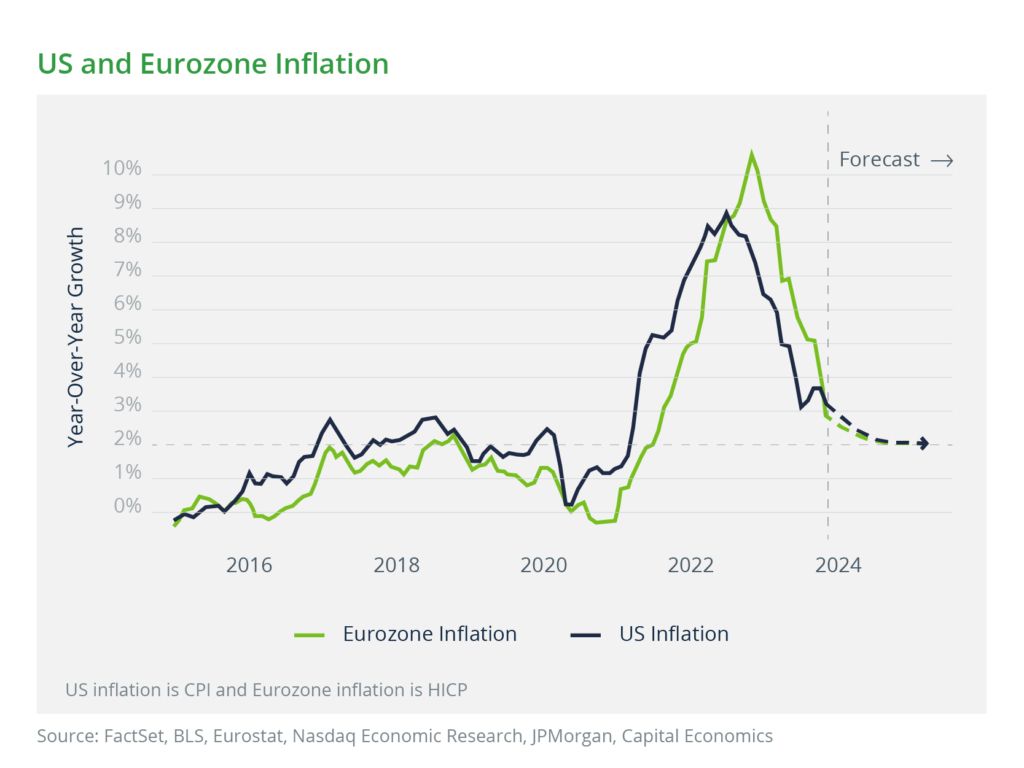
Interest Rates Have Peaked
Expect interest rates to start falling, Mackintosh said, with one or more cuts in 2024. But don’t expect too much—the days of zero interest rates are over.
This has already played out, as Federal Reserve officials in mid-December indicated they would be lowering rates three times in 2024.
We Will Likely Avoid a Recession in 2024
Strong consumer spending and employment are keeping us out of a recession. In fact, consumer spending has driven the GDP up to about 5%.
However, Mackintosh said he expects a slowdown in GDP growth in 2024 due to contraction in the manufacturing industry and slowed growth in the service sector, down from its post-pandemic peak. Services make up 80% of the economy, however, so continued growth here (albeit muted) is keeping the economy afloat.
Before Mackintosh spoke, however, we did a quick sentiment poll. Most attendees were optimistic about the economy, as shown in these poll results:
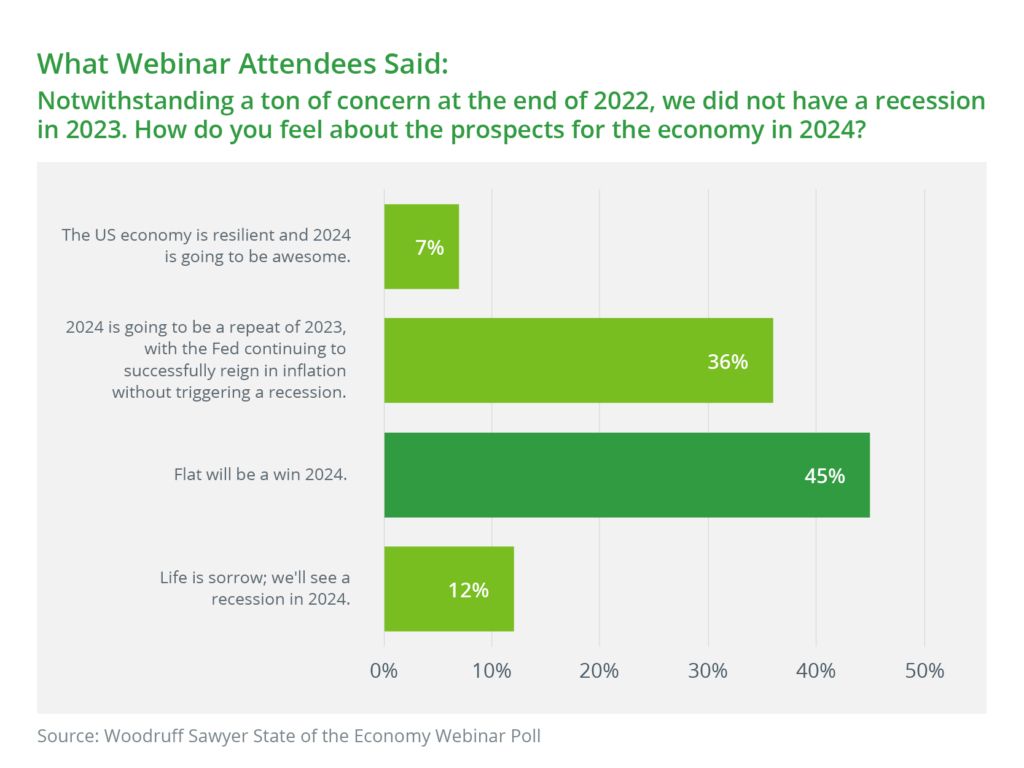
We also asked attendees about consumer spending—here’s what they thought about why spending is up:
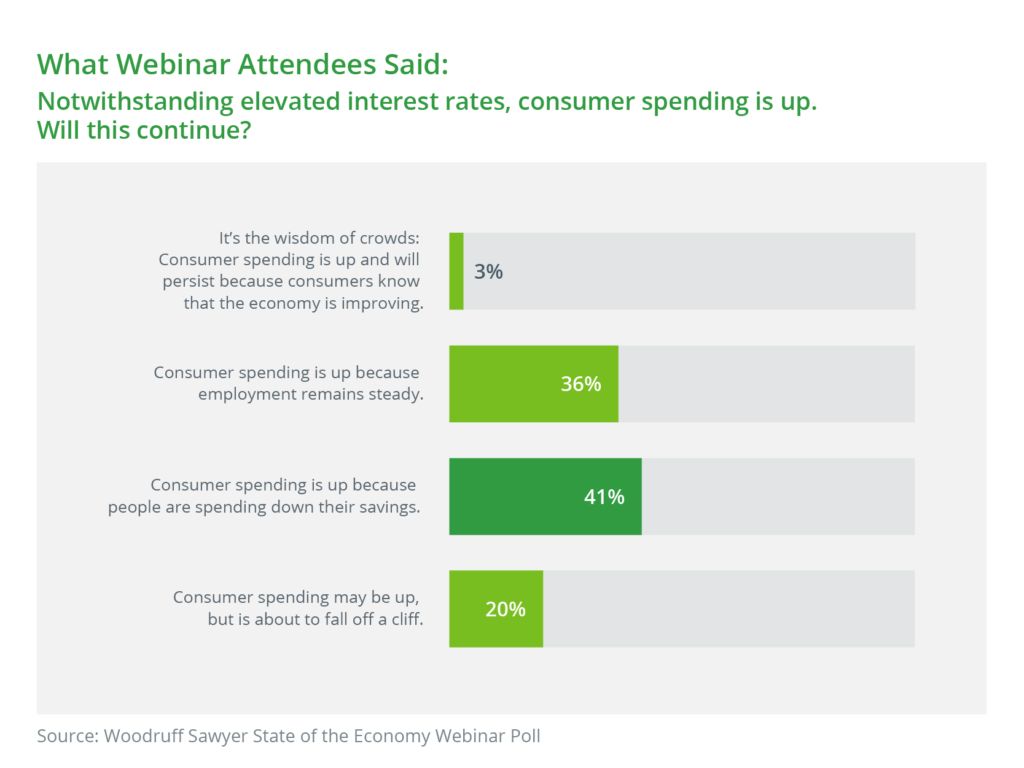
Employment is Strong Now, But it’s Softening
We’re nearing a 60-year low in unemployment in the US, but it’s starting to tick up.
Early retirements during the pandemic led to a dramatic change in the supply of workers. The good news is that the primary workforce has recovered, with the supply of workers back to pre-COVID levels.
The Great Resignation, a concern for many employers during the pandemic, has slowed and worker turnover has fallen. In addition, wage growth has come back down, which is helpful when it comes to controlling inflation and bolstering corporate margins.
Bankruptcies Rise to “Normal” Levels
While data show a sharp rise in company bankruptcies, Mackintosh said they’re simply rising back to normal levels. The federal emergency pandemic loans delayed inevitable bankruptcies for some companies. Those bankruptcies are hitting late, contributing to the rise we saw in 2023.
Many are brick-and-mortar retail companies that have been struggling, but the types of companies filing for bankruptcy are varied.
The IPO Pipeline for 2024 is Solid
There had been 151 IPOs as of December 2023, and the largest industry sectors with IPO activity have been consumer, healthcare, and information technology. Cassel said he is expecting a few IPOs in January from a blend of sectors, including within the healthcare sector. Further momentum for IPOs will depend on the success or trading performance of big-name IPOs in the medium term.
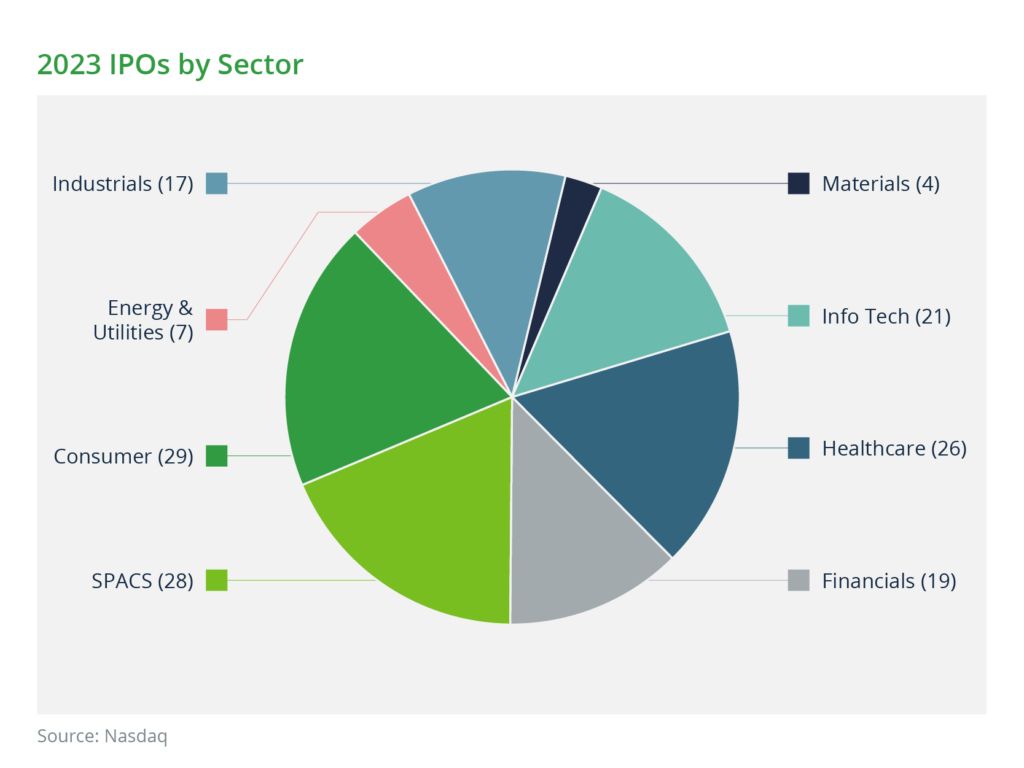
The Election Should Slow IPOs in Q4 of 2024
Assuming the past will predict the future, data from prior election years indicate that IPOs will slow in late October 2024, ahead of the presidential election. This means most IPOs in 2024 are expected to take place between March and October.
Webinar attendees, however, had different opinions. Based on a poll taken before Cassel spoke about his data, most expect (or hope) IPOs will pick up in late 2024 or 2025.
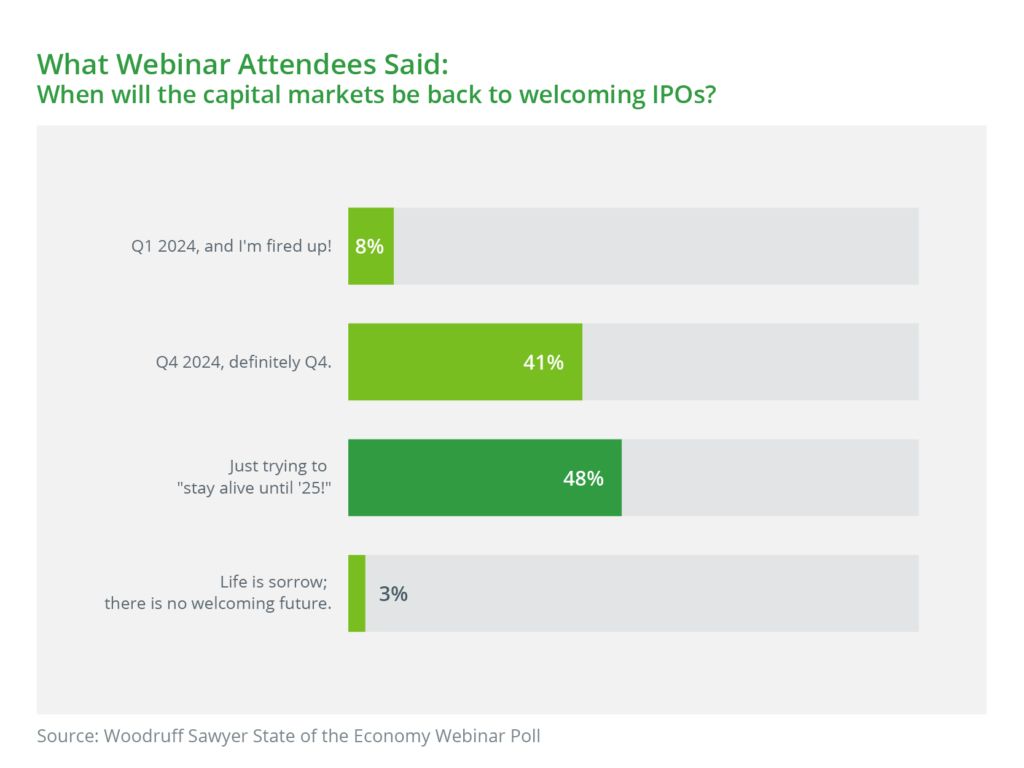
As for how the upcoming election will affect the economy, Mackintosh said that, as we all know, uncertainty is always bad for the stock market. He went on to note that volatility typically rises in the months prior to an election, but then comes back down shortly afterward. He also noted that, based on past data, a Republican president and a divided congress yield the worst returns for the stock market.
It’s Too Soon to Tell the Impact of Artificial Intelligence
Artificial intelligence (AI) is the topic of the year, as Cassel noted. The recent tech rally has been fueled by AI, and investors are asking companies how they will leverage AI or how they will compete against competitors leveraging AI. Cassel’s data slides on these points were particularly interesting.
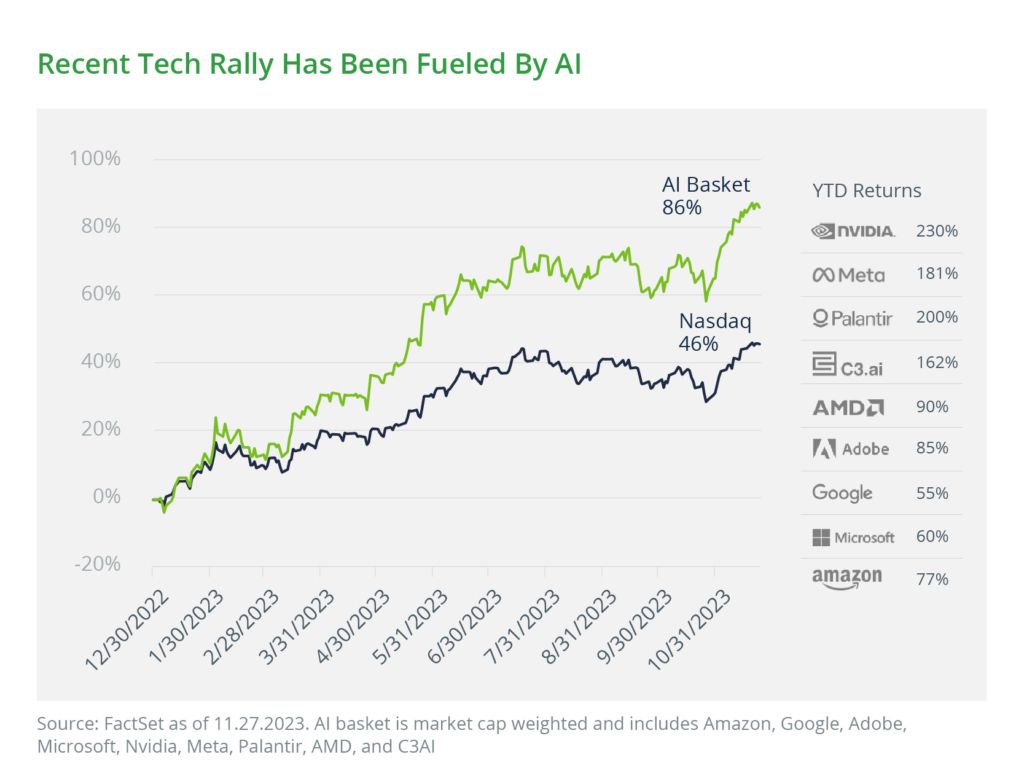
As for how AI will affect the economy, Mackintosh believes it’s too soon to predict the impact of AI on our lives and jobs. However, he expects it will displace workers in relatively low-income jobs first.
IPOs and D&O Insurance
The three elements of success for an IPO in 2024, according to Cassel, were having an anchor investor, a relatively small float, and an experienced management team and board. It should be noted that the second and third points—especially the third—help with getting D&O insurance at a good price.
| Get Woodruff Sawyer’s Guide to D&O Insurance for IPOs and Direct Listings, 2024 Edition. |
The current D&O insurance market, with its right-sized pricing, won’t be a drag on the IPO market like it was at the peak of the hard market. Now is the ideal time to buy D&O insurance, and well-run companies with great management and a good board will get very favorable rates.
For more information on what to expect from the economy in 2024, watch the full recorded webinar.
Author
Table of Contents











